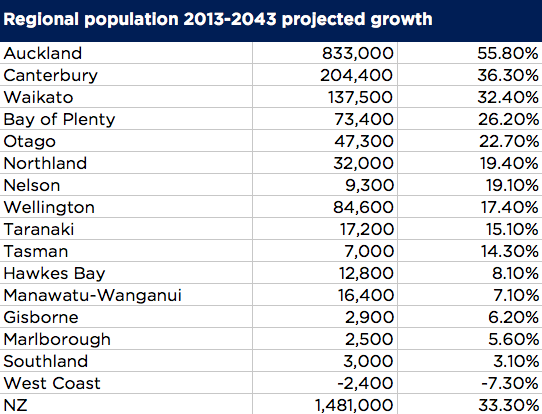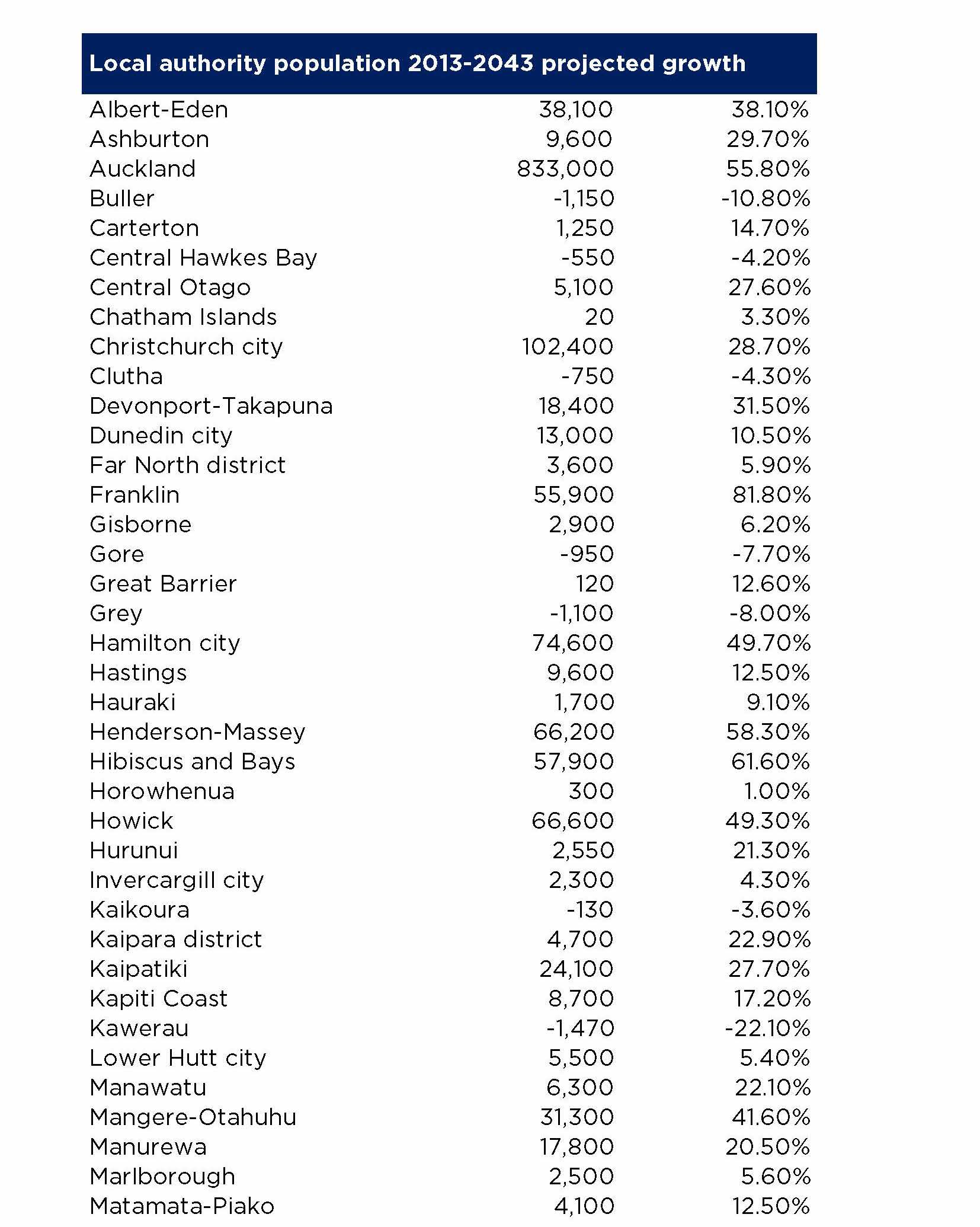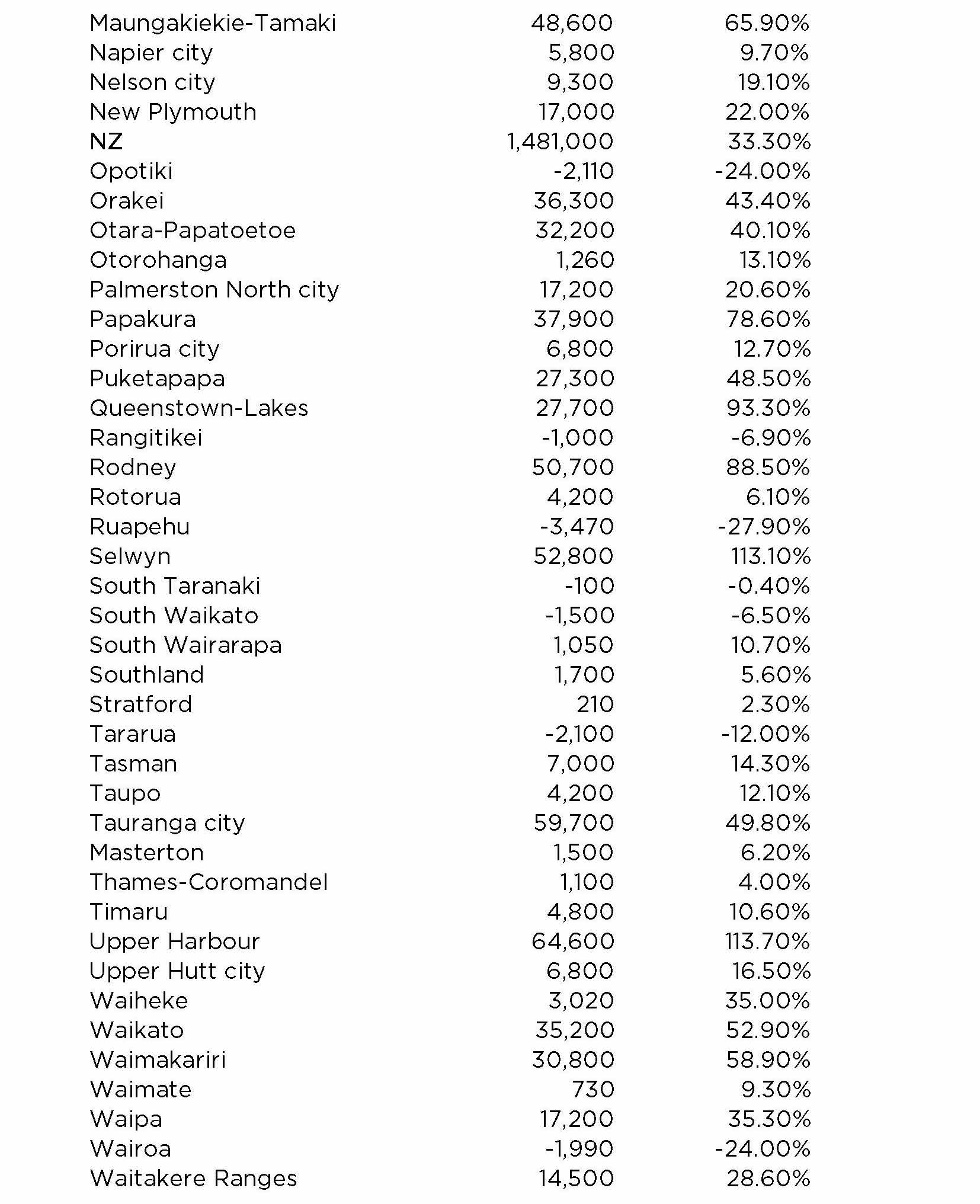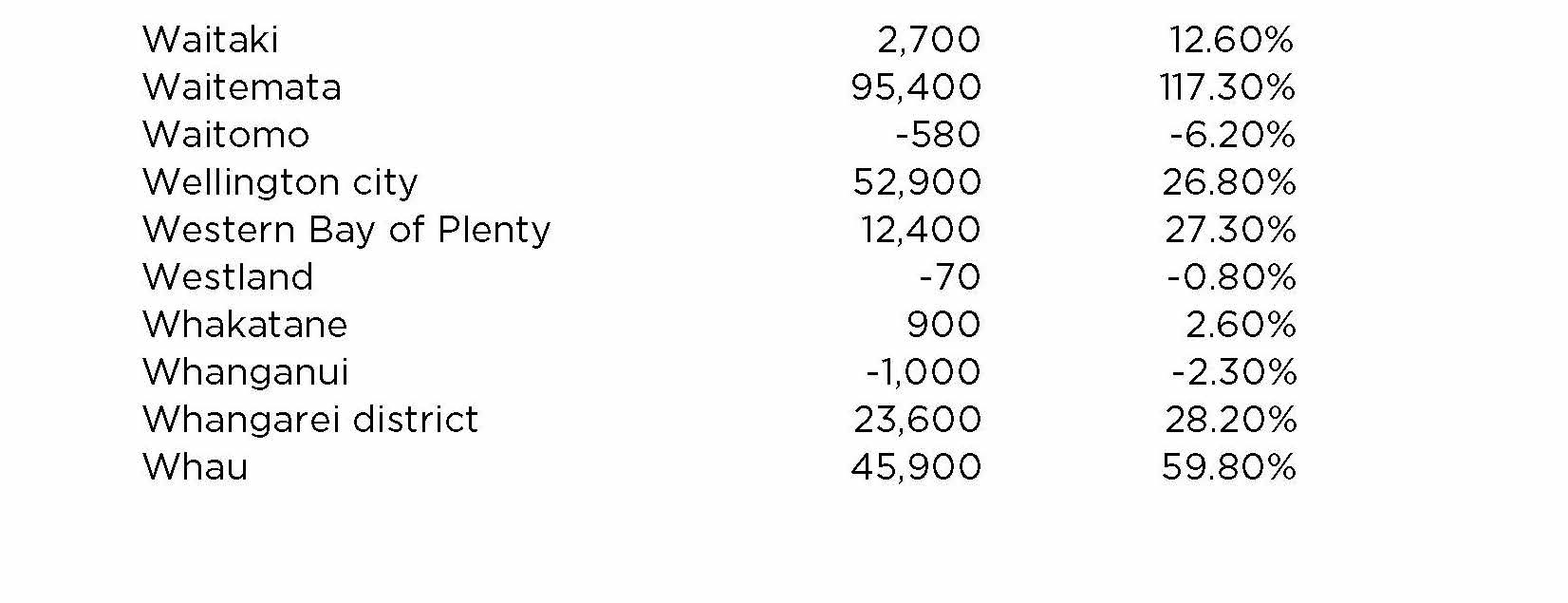Statistics New Zealand has released revised population growth projections for our regions and local authority areas. Rather than forecasts, these projections are based on trends in an area’s age profile, death/birth rates and migration (both internal and international).
Tony Alexander, Chief Economist at BNZ, often invites investors to look into these figures when weighing up potential property investment opportunities.
“[We invite] people interested in investing in regional residential property markets to refer to these numbers when considering whether the low prices of an area represent a bargain or simply reflect the dynamic of weak population growth or in fact population shrinkage,” Tony explains in his BNZ Weekly Overview column.
At a regional council level, here are the latest population growth projection levels forecast for between 2013 and 2043.

Tony says: “What we see is that percentage-wise Auckland is projected to have the greatest growth in population from 2013 to 2043 of 55.8% or 833,000.
“This will account for 56% of the country’s projected population growth and [will mean that] come 2043 Auckland will account for 39.3% of all people in NZ, [up] from 34% in 2013.”
Comparatively, between 1961 and 2013 Auckland grew from 21% of the population to 34%.
Projections at a local authority level provide a more detailed breakdown of possible population growth, which is helpful for prospective property investors.
“It pays to keep an eye on population growth scenarios because history tells us that at this stage of the housing cycle people tend to get over-optimistic regarding regional growth, invariably overestimating the number of people who will leave Auckland,” Tony explains.
“There are 17 local authority areas around New Zealand where population is projected to shrink, led by Ruapehu [with a drop of] 28%, then Opotiki [dropping by] 24%.”
This is down from previous calculations made in 2015, which forecast that 26 local authority areas would see a decrease in population.
“For some of these 17 areas population may not decline if net migration is at the high end of possible scenarios,” Tony cautioned.
“Personally I would boost projected population growth for the areas north of Wellington as development of the Wellington Northern Corridor greatly raises the potential for businesses to shift up the coast – especially should Wellington suffer another shake.
“I’d also bias a bit more generally toward strong city growth versus more country linked areas given the way the technological revolution we are living through is encouraging city living.”
While there are many factors a property investor should take into account when weighing up the pros and cons of a potential investment, potential population growth is a helpful measure to keep in mind when comparing opportunities.



Read more from Tony Alexander, Chief Economist at BNZ, at tonyalexander.co.nz
15 Mar 2017

